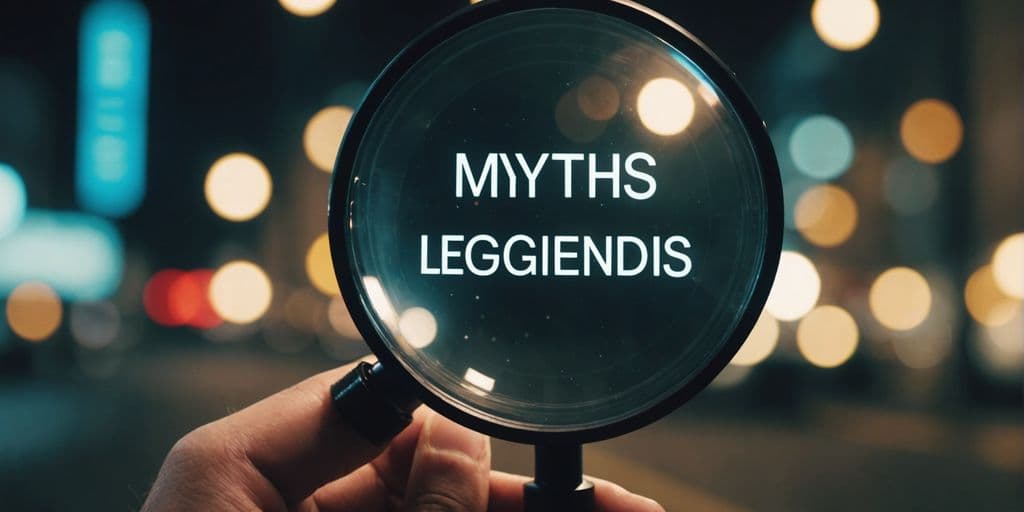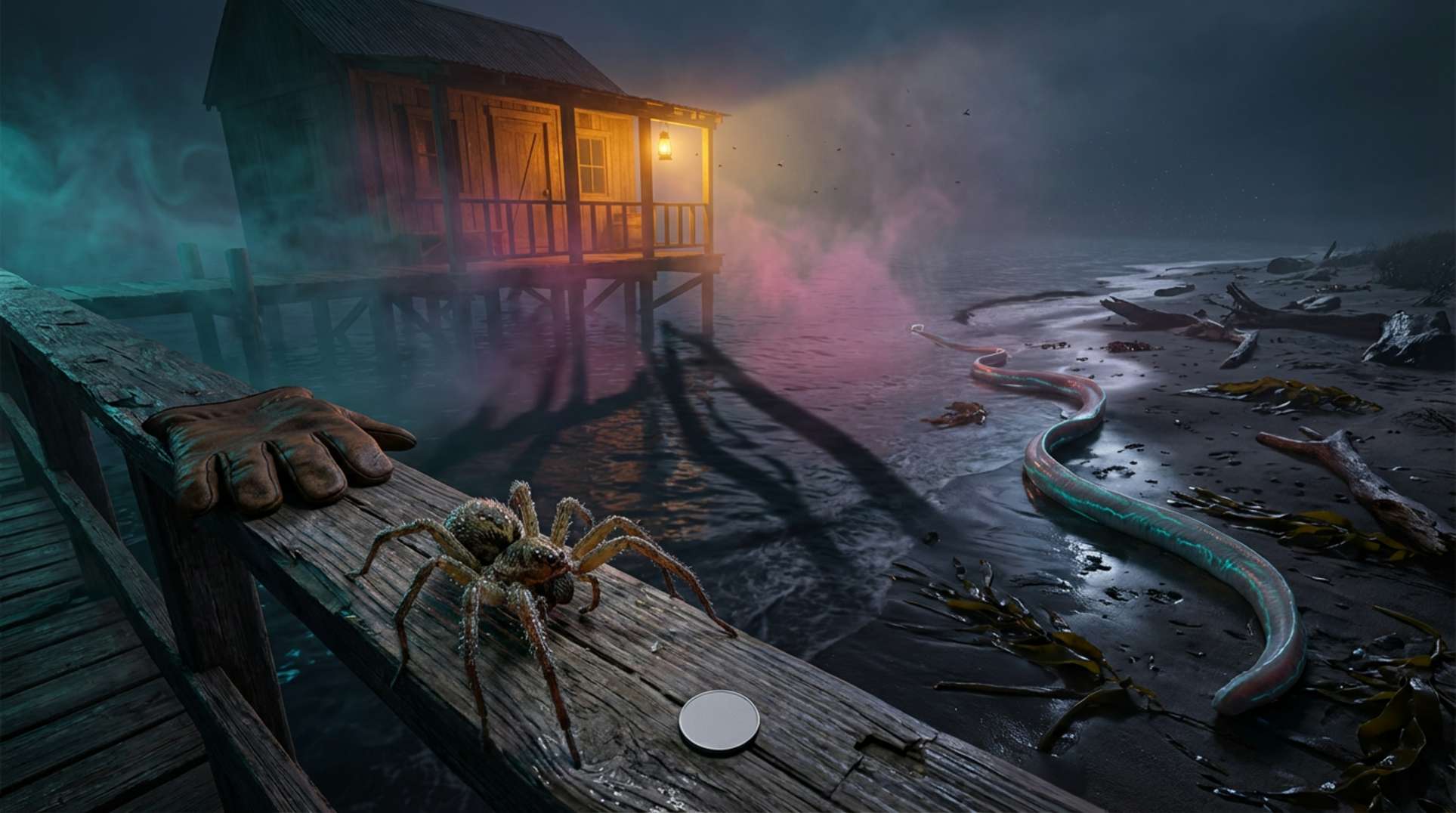Urban legends are stories passed down through generations, often told as true but usually based on fiction. These tales can be spooky, thrilling, or even funny, and they reflect the fears and beliefs of the societies they come from. In this article, we will explore some popular urban legends and separate the facts from the fiction.
Key Takeaways
- The Halloween Candy Scare is a myth with no evidence of widespread candy tampering.
- The Babysitter and the Man Upstairs story has no real-life incidents to back it up.
- The Hookman legend is likely a cautionary tale with no real attacks reported.
- The Amityville Horror is a fabricated story with no evidence of paranormal activity.
- Urban legends often reflect societal fears and are amplified by media and social sharing.
The Halloween Candy Scare
Origins of the Legend
The Halloween Candy Scare is one of the most well-known urban legends. It tells of people tampering with Halloween candy, inserting razor blades, poison, and other harmful substances. This legend has been around for decades, causing fear among parents and children alike.
Cases and Investigations
Despite the widespread belief, there is no evidence of any widespread candy tampering. Most reports of "poisoned" candy are either hoaxes or misunderstandings. Investigations into these claims have repeatedly shown that the stories are not based in reality.
Why It Persists
The legend persists due to a combination of media influence and societal fears. Stories about dangerous Halloween candy often resurface during the Halloween season, amplifying fear and anxiety. This urban legend is a classic example of how some common misconceptions are also considered to be urban legends, and they are sometimes involved in moral panics.
It’s important to remember that while Halloween is a time for spooky stories, many of these tales are not based in reality. Enjoy the holiday without fear of imagined dangers.
The Babysitter and the Man Upstairs
The tale of "The Babysitter and the Man Upstairs" is a classic urban legend that has been told for decades. It typically involves a young babysitter who receives eerie phone calls from a stranger, only to discover that the calls are coming from inside the house. This story has evolved over time, reflecting societal fears and anxieties.
The Story’s Evolution
The legend of the babysitter and the man upstairs has its roots in the mid-20th century. Initially, it was a cautionary tale warning young women about the dangers of babysitting alone. Over the years, the story has been adapted into various movies and TV shows, each adding its own twist. For much of the 20th century, this legend showed how little American storytellers trusted a seemingly safe environment.
Real-Life Incidents?
While the story is largely fictional, it has been inspired by real-life events. One such incident occurred in the 1950s when a babysitter was indeed harassed by a series of disturbing phone calls. However, the dramatic climax of the calls coming from inside the house is purely a product of creative storytelling.
Cultural Impact
This urban legend has had a significant impact on popular culture. It has been referenced in numerous films, books, and even songs. The story taps into universal fears of vulnerability and the unknown, making it a timeless piece of folklore. The terrified babysitters in these tales reflect broader societal anxieties about safety and trust.
The Hookman
Origins and Variations
The popular urban legend of the Hookman tells the story of a "hook-handed lunatic" who escapes from a local institution in Pennsylvania, USA. This tale has been told in various forms, but the core narrative remains the same: a couple is parked in a secluded area when they hear a scratching sound on the car door. They drive away in fear, only to find a hook hanging from the door handle. This story has been a staple of campfire tales and horror movies for decades.
Psychological Underpinnings
The Hookman legend taps into deep-seated fears about vulnerability and the unknown. The idea of being attacked in a secluded place plays on our natural instincts to seek safety and avoid danger. This legend also serves as a cautionary tale, warning young people about the potential dangers of isolated locations.
Debunking the Myth
Despite its widespread popularity, there is no evidence to support the existence of a hook-handed killer. Investigations into the origins of this legend reveal that it is purely fictional, likely created to scare teenagers and keep them from engaging in risky behavior. While the story may be thrilling, it is important to remember that it is just that—a story.
The Amityville Horror
The Real Story
The Amityville Horror house became famous in 1975 when a family claimed to experience terrifying apparitions and supernatural events. The real story behind this haunting involves the Lutz family, who moved into the house where Ronald DeFeo Jr. had murdered six members of his family a year earlier. The Lutzes reported strange occurrences, such as foul odors, cold spots, and mysterious sounds. However, many of these claims have been questioned over the years.
Media Influence
The media played a significant role in amplifying the Amityville Horror story. Books, movies, and documentaries have all contributed to the legend, often exaggerating or fabricating details to create a more compelling narrative. The 1977 book "The Amityville Horror" by Jay Anson and the subsequent 1979 film adaptation were particularly influential in cementing the story in popular culture.
Skeptical Perspectives
Skeptics have long questioned the validity of the Amityville Horror claims. Investigations have revealed inconsistencies in the Lutz family’s story, and some have suggested that the entire haunting was a hoax designed to profit from the media frenzy. Despite these doubts, the legend of the Amityville Horror house continues to captivate the public’s imagination.
The Amityville Horror house was the site of a famous haunting in 1975, where a family experienced terrifying apparitions and supernatural events.
The Role of Social Media in Spreading Urban Legends
Social media has revolutionized the way urban legends spread. Now, they can be spread by any media, including newspapers, mobile news apps, e-mail, and most often, social media. This rapid dissemination has made it easier for these stories to reach a global audience almost instantly.
Real-Life Consequences of Urban Legends
Urban legends might seem like harmless fun, but they can have serious real-life consequences. These stories can affect people’s emotions, actions, and even society as a whole. Let’s explore some of the key impacts.
Fear and Anxiety
One of the most significant effects of urban legends is the fear and anxiety they can cause. These stories often tap into our deepest fears, making us worry about things that aren’t real. Children are especially vulnerable, as they might believe these tales and develop long-lasting fears. Even adults can feel uneasy or scared because of these stories.
Violence and Crime
Urban legends can sometimes inspire real-life violence and crime. For example, the story of the "Candyman" has been linked to several violent acts. People might try to imitate the actions described in these legends, leading to dangerous situations. This shows how powerful and harmful these stories can be.
Spread of False Information
Another consequence is the spread of false information. When people believe and share urban legends, they can cause unnecessary panic and fear. This is especially true in the age of social media, where stories can go viral quickly. Debunking these myths becomes a challenge, as the false information spreads faster than the truth.
Stigmatizing Certain Groups
Some urban legends can also perpetuate harmful stereotypes and stigmatize certain groups of people. For instance, the story of the "Hook Man" portrays people with disabilities as dangerous. These stereotypes can lead to discrimination and marginalization, affecting the lives of real people.
It’s important to remember that while urban legends can be entertaining, they can also have serious consequences. By understanding and debunking these myths, we can help reduce fear, anxiety, and misinformation in our society.
How to Fact-Check Urban Legends
In today’s world, urban legends can spread quickly, especially with the help of social media. Fact-checking these stories is essential to avoid unnecessary fear and misinformation. Here are some steps to help you separate fact from fiction.
Checking Sources
When you come across an urban legend, the first step is to check the source. Is it from a reputable news outlet or a blog post from an unknown author? Reliable sources are more likely to provide accurate information. If the story is only found on dubious websites, it’s best to be skeptical.
Researching Details
Look into the details of the story. For example, if the legend involves a haunted house, research the history of the house and any reported paranormal activity. Cross-referencing multiple sources can help you determine the story’s credibility.
Eyewitness Accounts
Eyewitness accounts can be valuable but should be taken with caution. People may misremember events or be influenced by others. Always verify these accounts with additional evidence.
Checking for Inconsistencies
Look for inconsistencies in the story. If the tale has plot holes or contradicts itself, it’s likely not true. For instance, if a story claims a killer clown was never caught, but there are no reports of missing persons or unsolved murders in the area, it’s probably a hoax.
Fact-checking is a crucial tool in debunking urban legends. By following these steps, you can better distinguish between fact and fiction and avoid spreading false information.
The Psychology Behind Urban Legends
Urban legends captivate us because they tap into our deepest fears and anxieties. These stories often spread quickly and become ingrained in our culture, shaping how we think and feel about the world around us. Understanding the psychology behind urban legends can help us see why they are so powerful and persistent.
The Evolution of Urban Legends
Urban legends have a fascinating history, evolving from simple oral storytelling to complex narratives shared across the internet. This transformation reflects changes in how we communicate and the mediums we use to share stories.
Oral Tradition to Internet
Long before the internet, urban legends were passed down through generations via oral storytelling. These tales would change slightly with each retelling, adapting to the cultural context of the listeners. This dynamic process allowed urban legends to become deeply ingrained in society.
With the advent of print media, newspapers became a powerful tool for spreading urban legends. Sensational headlines and gossip columns captured the public’s imagination, helping these stories reach a wider audience.
The internet revolutionized the way urban legends spread. Online forums, chat rooms, and websites dedicated to creepy tales allowed these stories to reach a global audience almost instantly. The speed and ease of online communication blurred the line between fact and fiction.
Media Influence
Media has always played a crucial role in the evolution of urban legends. From newspapers to social media, each new medium has amplified the reach and impact of these stories. Social media, in particular, has given rise to viral posts and memes that can quickly catapult an urban legend into the public consciousness.
Modern Adaptations
In the digital age, urban legends have taken on new forms. "Creepypasta," a term derived from "copy-paste," refers to short, scary stories shared online. These modern tales tap into our fears and anxieties, continuing the tradition of urban legends in a new format.
The evolution of urban legends shows how adaptable and resilient these stories are. They reflect our changing modes of communication and continue to captivate us, no matter the medium.
Popular Urban Legends from Around the World
Urban legends are fascinating tales that capture our imagination and reflect the cultural beliefs and fears of different societies. These stories often spread like wildfire, captivating our attention and leaving us questioning their validity. From ghostly parks in San Francisco to reports of demons haunting the streets in Mexico City, here are some of the world’s spookiest urban legends.
Urban Legends in Popular Culture
Urban legends have found a significant place in popular culture, influencing various forms of media and entertainment. These stories, often eerie and mysterious, captivate audiences and inspire countless adaptations. From movies to video games, urban legends continue to shape our cultural landscape.
Debunking Famous Urban Legends
Urban legends have a way of capturing our imaginations and often leave us wondering if there’s any truth behind them. Here, we take a closer look at some of the most famous urban legends and separate fact from fiction.
Conclusion
Urban legends have a way of capturing our imaginations and tapping into our deepest fears. While these stories can be entertaining, it’s important to remember that many of them are just that—stories. By debunking these myths, we can enjoy the thrill of a good scare without falling prey to unnecessary fear. As we’ve seen, urban legends often spread through word of mouth, media, and now social media, making it easier than ever for these tales to gain traction. However, with a little critical thinking and fact-checking, we can separate fact from fiction and appreciate these stories for what they are: a fascinating glimpse into our collective psyche. So, the next time you hear a spooky tale, take a moment to question its validity and enjoy the story for the piece of folklore that it is.
Frequently Asked Questions
What is an urban legend?
An urban legend is a modern story or myth that is often told as if it’s true. These stories usually contain elements of horror, humor, or mystery and are passed around by word of mouth or through media.
Are urban legends based on real events?
Urban legends may be inspired by real events, but they often become exaggerated or distorted over time. They are usually more fiction than fact.
Why do people believe in urban legends?
People believe in urban legends because they tap into common fears, anxieties, and cultural beliefs. The stories are often told in a convincing way, making them seem plausible.
How do urban legends spread?
Urban legends spread through word of mouth, media, and more recently, social media. They evolve with each retelling, which helps them reach a wider audience.
Can urban legends cause real-life harm?
Yes, urban legends can cause real-life harm by spreading fear, misinformation, and sometimes leading to dangerous behavior. They can also contribute to anxiety and panic.
How can I fact-check an urban legend?
To fact-check an urban legend, start by checking the source of the story, research the details, look for eyewitness accounts, and check for inconsistencies. Reliable sources and critical thinking are key.
Why do urban legends remain popular?
Urban legends remain popular because they are entertaining, tap into universal fears, and serve as cautionary tales. They also evolve with culture, keeping them relevant.
What role does social media play in spreading urban legends?
Social media plays a significant role in spreading urban legends by allowing stories to go viral quickly. It amplifies fear and makes it challenging to debunk false information.




